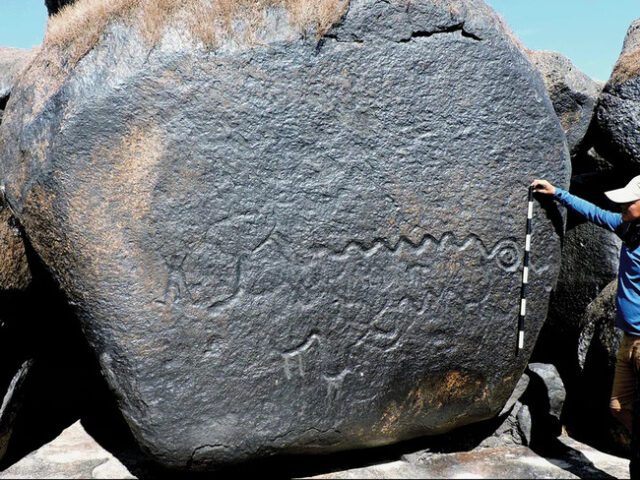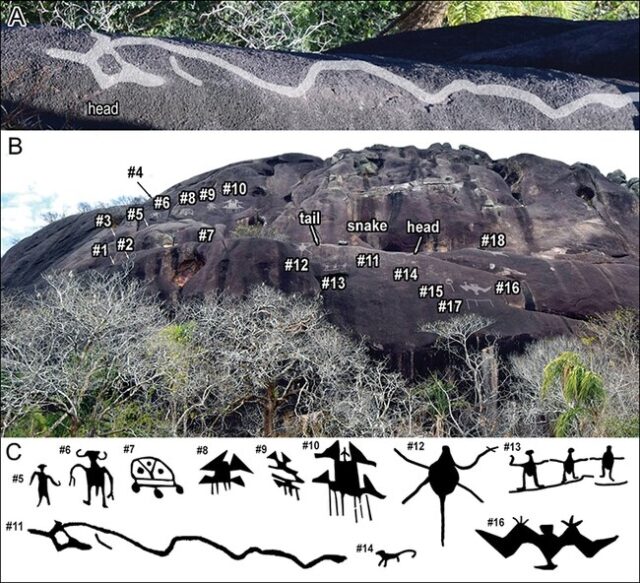
Humans have been representing the world around us in artistic creations for countless millennia. From cave paintings to ancient bone carvings, the meanings of ancient art are only sometimes truly intelligible to modern minds. Archeologists devote countless hours to uncovering, documenting, and interpreting ancient art. Among the more recent papers to interpret ancient South American artwork was published in Antiquity. A team of archeologists sought out the long-rumored rock art engravings of the Middle and Upper Orinoco Rivers in Colombia and Venezuela. Their findings shed light on the sheer amount of carvings and the impressive size of certain monumental snakes. Along the winding, ancient river, the archeologists searched in quest of carvings known by locals and the subject of rumors for hundreds of years. Using drones, photography, and their climbing ability, the archeologist authors of the recent paper documented 157 sites of rock art, noting there are likely thousands more out there. Carved into the rock were insects, alligators, geometric motifs, stingrays, birds, and human or humanoid figures. Sixty of the engravings stretched an impressive 30 feet or more.

Who carved these pictographs, when, and why? According to the dating of deposits of pottery with similar designs, the engravings are likely about 2,000 years old. They may have been carved by Indigenous Piaroa artists or others from nearby tribes. The Piaroa, like others in the region, have ancient beliefs about snakes. The anaconda Cuämoi figures prominently, and his daughter Cuähuais believed to have created rock art along the Orinoco River. In cosmologies throughout South America, snakes can be associated with rivers, creation myths, and spiritual journeys. Why the reliefs were carved is uncertain. However, the authors noted that many were at the ancient river level around the time of carving. Given the size of the monumental figures, they’d be quite visible from afar. The team hopes to engage with the local Indigenous people whose knowledge of the region is unparalleled to continue to deepen their understanding of these artistic signposts along the historic river.














